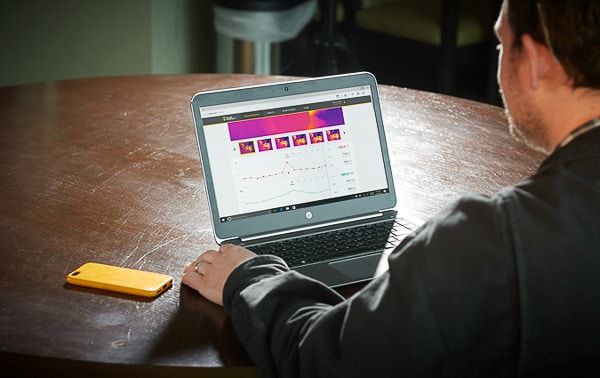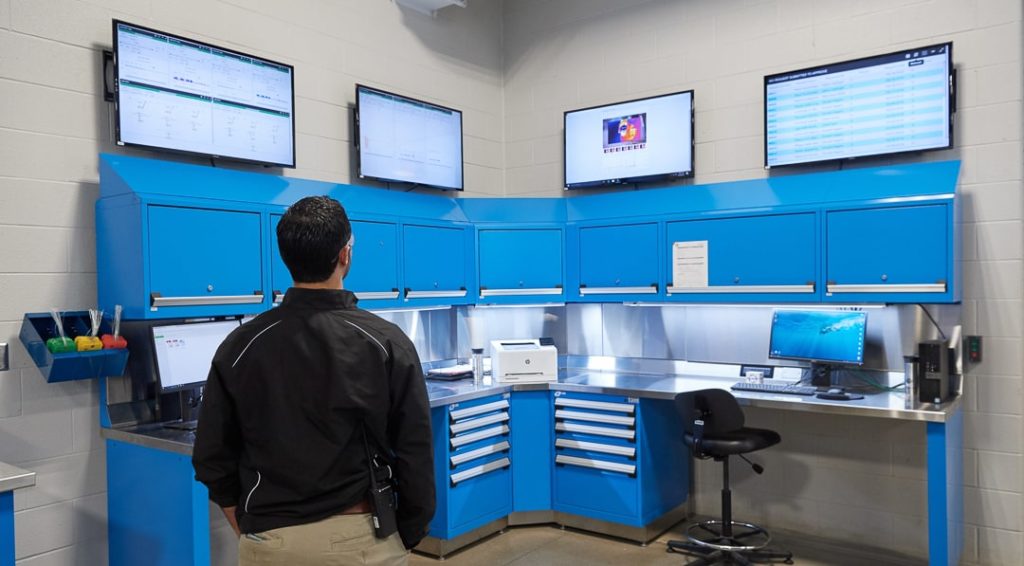According to LEAN Production principles, Total Productive Maintenance is an all-inclusive approach to maintaining equipment to achieve “perfect” production. Total Productive Maintenance, also known as TPM, aims for things like: zero downtime, no stops or slows, eliminating production defects, and no accidents.
The industrial world is moving away from reactive maintenance and toward a more proactive practice. Instead of fixing machines after they break, preventive maintenance programs have long tried to make repairs to avoid downtime. Predictive maintenance technologies are now taking things a step further. Predictive maintenance’s focus on internet-enabled devices lets teams stream data to judge real-time asset performance and status.
As a result, predictive maintenance is helping maintenance managers move closer toward Total Productive Maintenance.

The Pillars of Total Productive Maintenance
The emphasis under Total Productive Maintenance is to be proactive with tasks and work. To achieve Total Productive Maintenance and world-class status, there are eight pillars:
TPM Pillar #1: Administration – Data should be shared between departments, such as operations and maintenance.
TPM Pillar # 2: Improvement – Assign proactive improvements to groups, such as operators or leaders.
TPM Pillar #3: A Safe and Healthy Environment – Ensure workers are safe from hazards or accidents.
TPM Pillar #4: Quality Integration – Use root cause analysis to target errors and prevent a recurrence.
TPM Pillar #5: Training & Education – Bridge knowledge gaps in soft and hard skills, including management.
TPM Pillar #6: Preventive Maintenance – Make recurring maintenance tasks, scheduling for least downtime.
TPM Pillar #7: Early Equipment Management – Plan new equipment practices before installation and commissioning.
TPM Pillar #8: Autonomous Maintenance – Allow operators more ownership for cleaning, inspections, etc.
Predictive Maintenance in TPM
As these pillars highlight, Total Productive Maintenance goes hand in hand with preventive maintenance strategies. However, the world is moving past preventive maintenance and into predictive maintenance practices.
Preventive Maintenance
Preventive Maintenance (PM), also called “planned maintenance,” is a maintenance strategy to extend asset life by completing tasks regularly, either by time (calendar, monthly, etc.) or usage (cycles, counts, etc.).
Predictive Maintenance
Predictive Maintenance (PdM) moves beyond the time/usage basis and into actual status by monitoring asset health and performance to determine the best time to complete maintenance tasks.
Example: Company 1 pays a technician or operator to complete vibration measurements every week (preventive). Data collection is an expense. Company 2 installs vibration sensors (predictive) to upload data to the cloud directly. Sensors are the data collection expense, while technicians and operators continue with work.
Continuous data makes for better root cause analysis in the Quality Integration stage. And that data can be shared between departments for administration purposes. When an organization can determine asset health and performance at the click of an app on their phone, they know their workers will be safe against unexpected asset hazards.
Connected Reliability and TPM

For years, industrial organizations have been collecting automation, control, and process management data. IIoT moves the storage into online, digital spaces. Connected Reliability uses asset performance data, historical records, real-time status, previous work logs, production capacity, asset schematics, inventory supplies, etc., in root cause analysis, decision making, and maintenance scheduling.
TPM, Connected Reliability, and the Pandemic
The COVID-19 pandemic has brought health and safety to the forefront, more so than previous improvement principles.
“As the pandemic has unfolded, we’ve seen and heard many inspiring stories from our customers. Highlighting their ability to keep their plants operating and fulfill their mission because they now have a connected infrastructure–something that was a pipedream only a few years ago.” Ankush Malhotra, Vice president of Fluke Reliability, said in a Smart Industry article
Maintenance technologies have been in higher demand than pre-pandemic. Organizations realize how much more powerful data is when used by everyone (off-site, on-site, or working remotely).
Total Productive Maintenance and Connected Products
Reliability is in our name. And, as such, Fluke Reliability aims to ensure client uptime using the latest technology, practices, and support training. We don’t just sell products, we are a reliability partner for all our clients. Their TPM success is our success. Please don’t take our word for it; listen to our customers.
“Our eMaint implementation specialist always manages to make me feel like I am his favorite customer, and my database is the most important one. Our implementation was not easy; we were attempting to make multiple customers in multiple states happy. Shawn was so patient and positive, and I felt as if we were on the same team trying to troubleshoot these issues together.” – Jennifer Ackles, HHS Vice President, Support Operations
“One of our goals was to get workers to engage with the CMMS, get their feedback straight from the field, and use that information to improve our overall work effectiveness. Where we’re at now is, all of our 22 facilities are using the same system. We’re all using eMaint.” – Phil Aiello, performance engineer for DCO Energy
“We’re starting to get more people involved in monitoring the sensors and getting more users to download the Fluke app so they can get alarms and view trends themselves. Once we get more familiar and confident with the equipment, I see us adding more monitoring devices to our critical production equipment.” – Eric Pulling, manufacturing utility process engineer, Valley Queen Cheese
To learn more about how Fluke Reliability can help you improve your Total Productive Maintenance program, please speak with one of our specialists.

